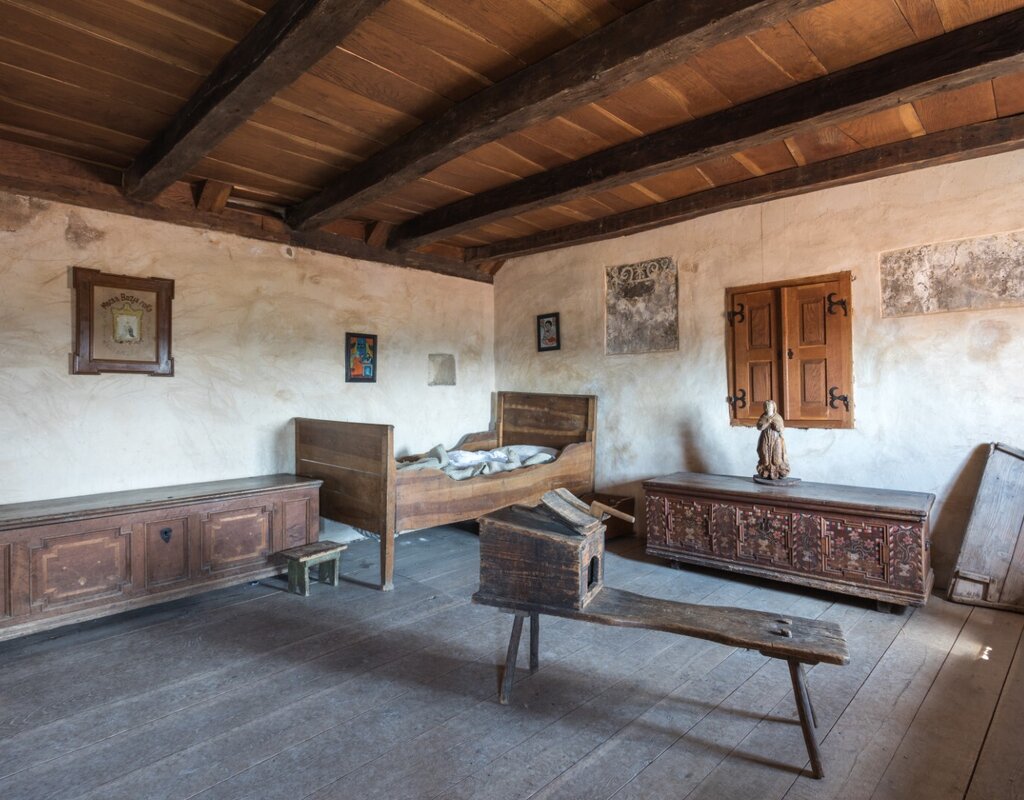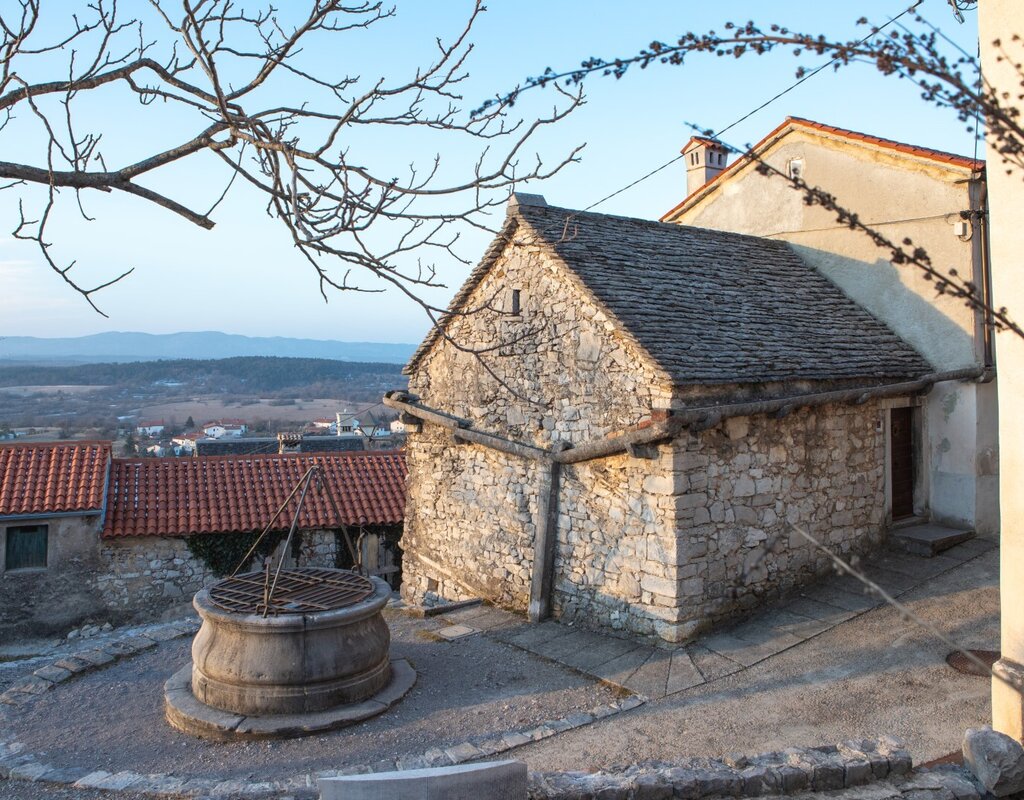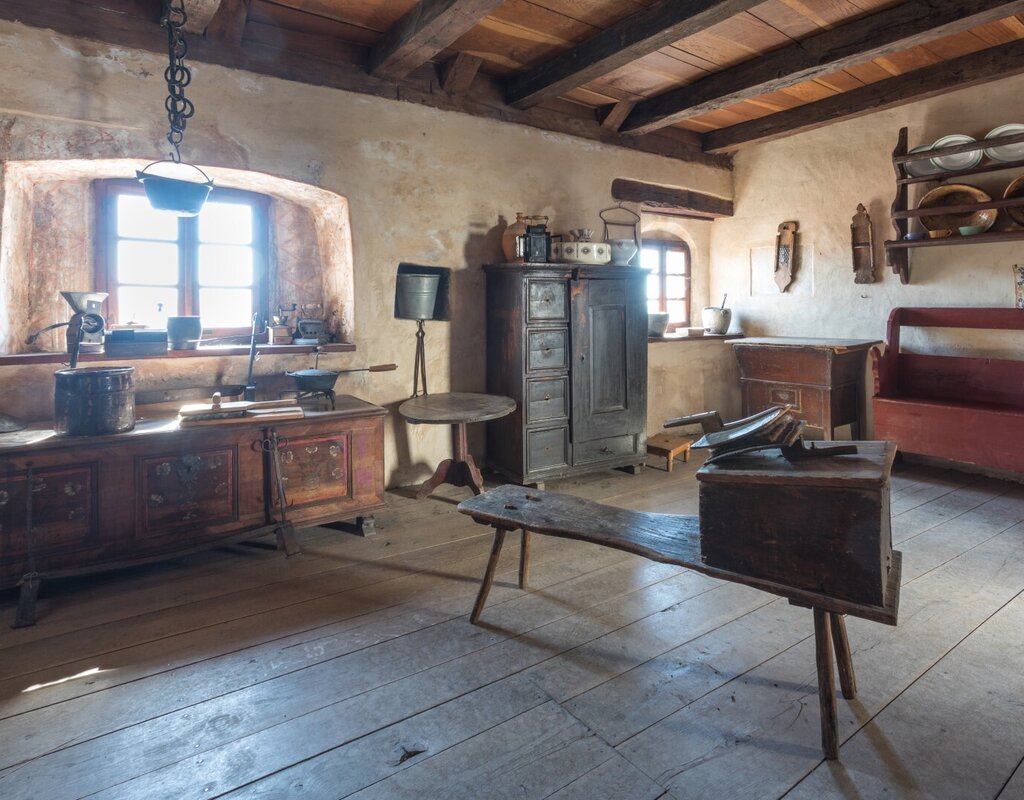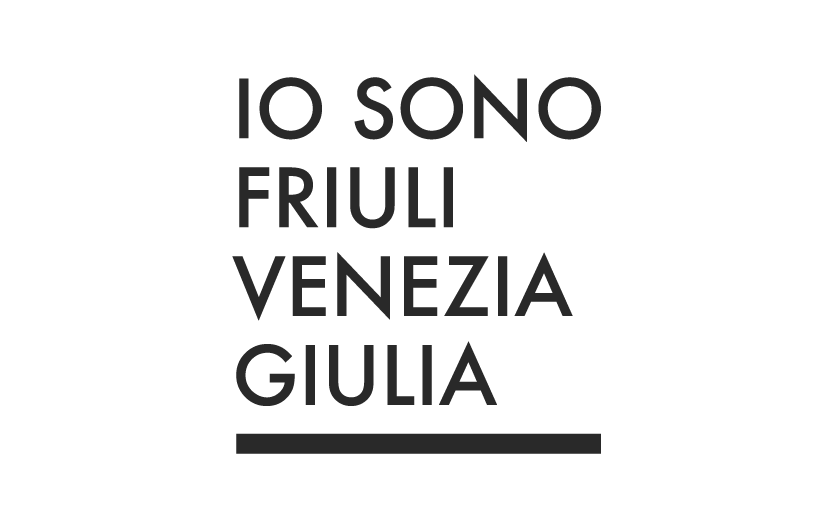Where:
Štanjel 23
6222 Štanjel
grajzarjevi@gmail.com
+386 31 541 636
Karst House in Štanjel
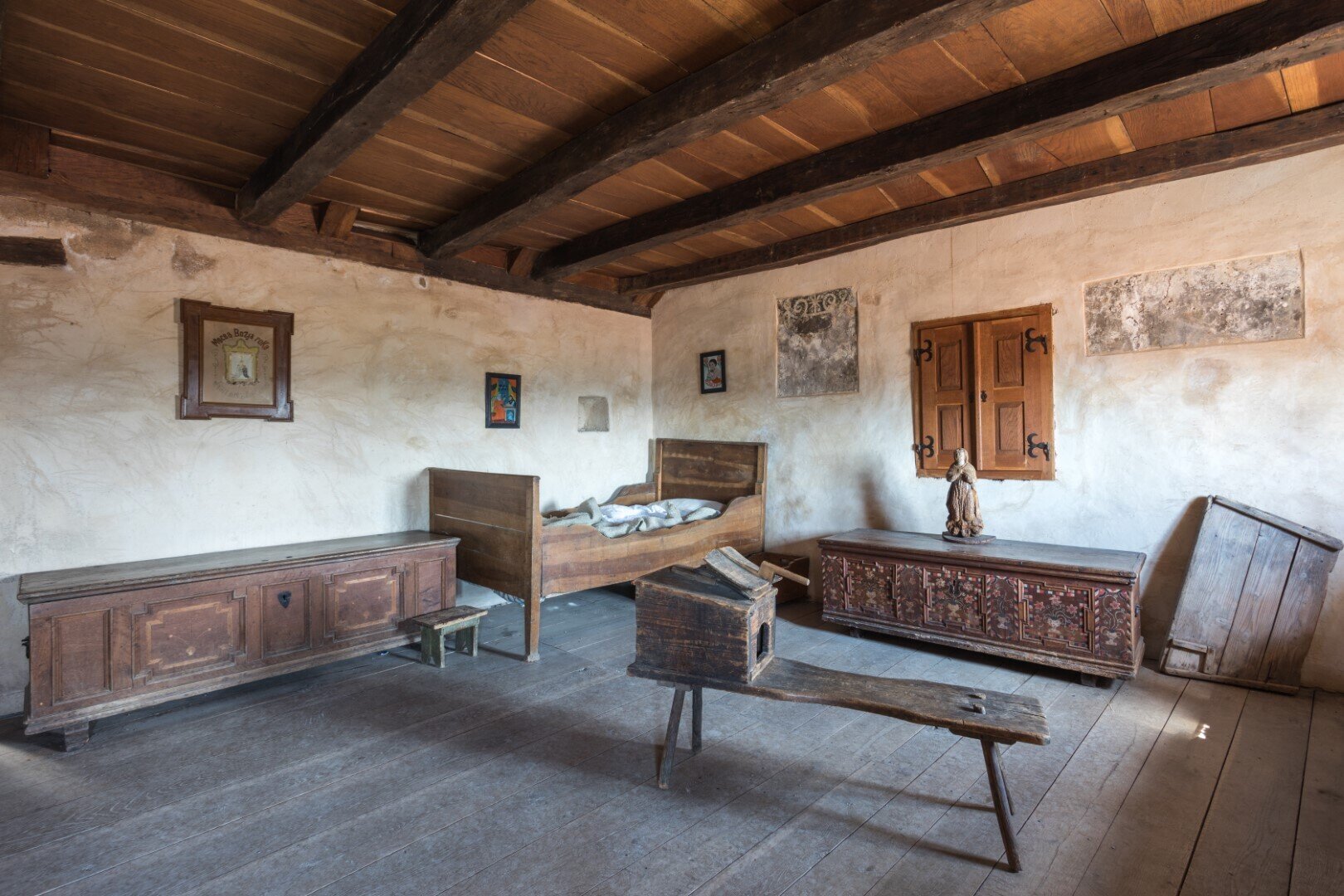
This two-storey karst house presents true folk architecture.
The ethnological collection in Štanjel is located in a renovated building called the “Roman house”, said to be the oldest in the village. The house was most likely built in the 14th or 15th century. The collection is dedicated to the material folk culture of the Karst. It acknowledges the resourcefulness of the ordinary local people who used stone as a building material wherever possible. The roof is covered with stone slabs and rain water runs along them into stone gutters and then into the monumental public well, which shows just how important water was and still is in the Karst. The house reveals architectural peculiarities of the original Karst houses built in the Romantic and Gothic periods.
The ground floor features the agricultural premises, while the first floor was the living space. In the agricultural part of the house, some traditional farmer tools and items are exhibited, enabling visitors to become acquainted with the activities the Karst locals most commonly did in the past: winemaking, livestock breeding and agriculture. The people from the Karst sold their produce/products in the nearby town of Trieste, whereas later this landscape, increasingly influenced by the proximity of a metropolis, became a perfect setting for the first tourist farms.
The house’s residential part comprises a kitchen and a bedroom, in a single space. This is where older members of the family or children would sleep, whereas the room was also used for storing farm produce, e.g. wheat, barley, potatoes and walnuts. Besides a window niche, the Karst kitchen is also characterised by the wall niche, called škafenca, with a shelf for pitchers and a pail with water. Near the double bed is the typical cradle and, next to the wall, a Karst wedding dowry chest. The bed sheets are from home-made linen and the blankets from home-made yarn. The bed features a typical mattress from corn-husk, called lubenca.
